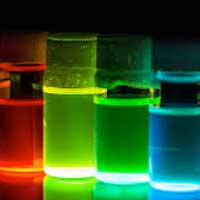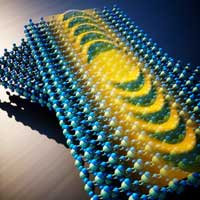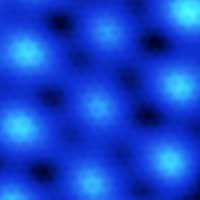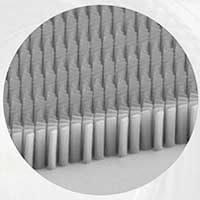Thursday, June 11, 2020
Smallest cavity for light realized by graphene plasmons
Researchers report on the smallest cavities ever realized for infrared light by using graphene and metallic cubes of nanometer sizes.
Researchers synthesize silicon-based quantum dots
 Researchers recently developed a new method of creating quantum dots made of silicon, one of the most utilized semiconductors in the world.
Researchers recently developed a new method of creating quantum dots made of silicon, one of the most utilized semiconductors in the world.
Nanostructuring improves success of dental implants
 Researchers'simple solution is the fabrication of nanopores - which are tiny nano-scale holes of just 40 to 80 nanometres in diameter - to cover the entire surface of the implant.
Researchers'simple solution is the fabrication of nanopores - which are tiny nano-scale holes of just 40 to 80 nanometres in diameter - to cover the entire surface of the implant.
New sensor technology could speed up blood tests for COVID patients
 Researchers are using laser-light technology to develop handheld biosensors with the potential to deliver fast, real-time blood test results for patients including those suffering from COVID-19 with secondary infections such as pneumonia.
Researchers are using laser-light technology to develop handheld biosensors with the potential to deliver fast, real-time blood test results for patients including those suffering from COVID-19 with secondary infections such as pneumonia.
Scientists apply 'twistronics' to light propagation and make a breakthrough discovery
 The findings provide a promising pathway for leapfrog advancement in imaging, optical-computing technologies, biosensing and more.
The findings provide a promising pathway for leapfrog advancement in imaging, optical-computing technologies, biosensing and more.
Cascade sets the stage for superconductivity in magic-angle twisted bilayer graphene
 Study finds that superconductivity in magic-angle twisted bilayer graphene emerges from a highly interacting state of electrons.
Study finds that superconductivity in magic-angle twisted bilayer graphene emerges from a highly interacting state of electrons.
Ultra-thin camera lenses of the future could see the light of day
 In the future, camera lenses could be thousands of times thinner and significantly less resource-intensive to manufacture. Researchers now present a new technology for making the artificial materials known as metasurfaces, which consist of a multitude of interacting nanoparticles that together can control light.
In the future, camera lenses could be thousands of times thinner and significantly less resource-intensive to manufacture. Researchers now present a new technology for making the artificial materials known as metasurfaces, which consist of a multitude of interacting nanoparticles that together can control light.
Subscribe to:
Comments (Atom)
